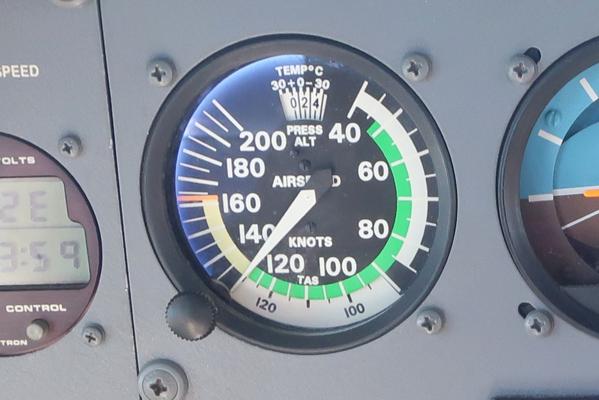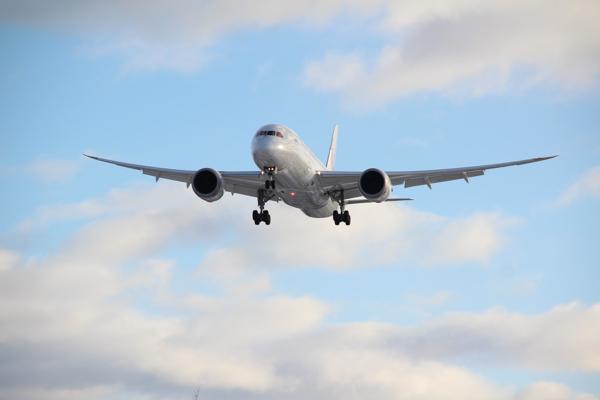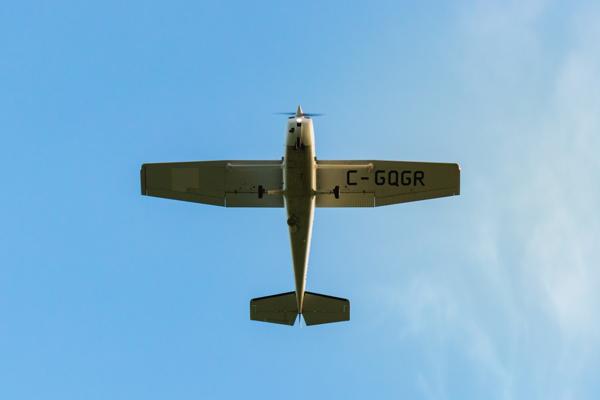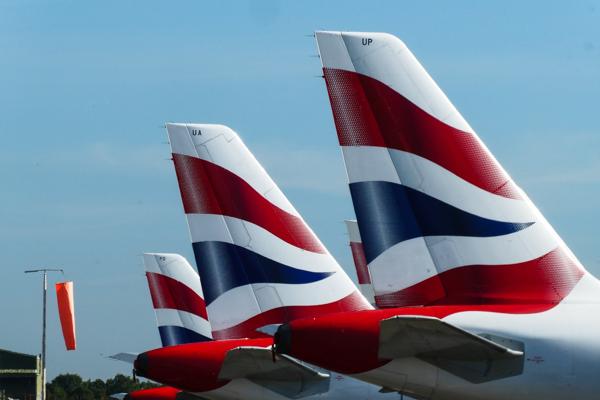Keeping your aircraft balanced through coordinated rudder and aileron inputs is a fundamental skill that you learn early on in your training. Remaining coordinated during a turn requires the application of rudder in the direction of the turn to counter the aircraft’s natural tendency to yaw in the opposite direction to the turn. This phenomenon to yaw against the turn is termed adverse yaw.
So why does this happen?
In order to roll your airplane to the left you need to produce a differential aerodynamic force on the wings that induces a rolling moment. We use the ailerons to produce this force so that in a left bank the left aileron deflects up, and the right aileron deflects down.
The upward deflection of the aileron on the down-going wing (the left aileron in this example) creates a downward force which pushes the wing downward, reducing its angle of attack.
Conversely, the downward deflection of the aileron on the upward-going wing pushes the wing upward, increasing the local angle of attack on that wing.

Lift-induced drag is a by-product of the generation of lift (or downforce) and manifests as a pair of wing-tip vortices shed off the wing. When the left and right wing are both producing an equal amount of lift, the induced drag created by each wing is equal and the aircraft is balanced around the yaw axis. However, when the lift produced by each wing differs, so does the induced drag, which causes a yawing moment.
Lift-induced drag is a function of the square of the lift-coefficient of the wing. This means that doubling the lift coefficient will increase the induced drag by a factor of 4. The lift coefficient is directly proportional to the angle of attack, which explains why if the two wings are operating at a different angle of attack, the lift-induced drag produced at each wingtip is not equal.
$$ Cd_{i} = \frac{C_{L}^{2}}{\pi AR e}$$
Coming back to our example of an airplane entering a left bank, the right (upward) wing is at a higher effective angle of attack than the left (downward). The induced drag at the right wingtip is therefore higher than the left which results in an unbalanced moment around the yaw axis, which rotates the nose to the right.
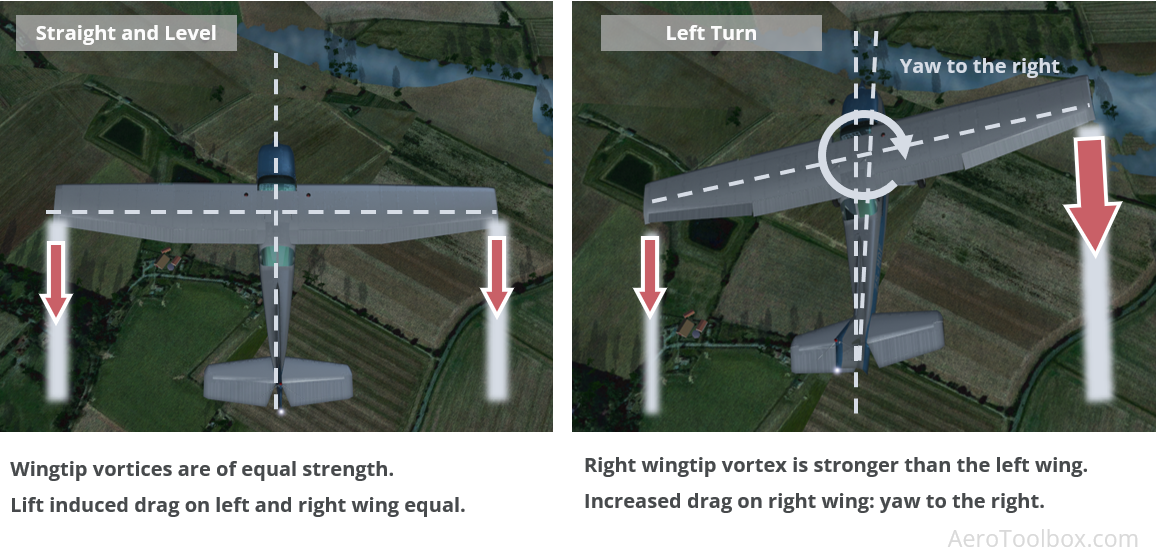
The primary effect of ailerons are to roll the airplane, with a secondary yaw effect in the direction away from the turn – adverse yaw.
Compensating for Adverse Yaw
In a coordinated turn, adverse yaw is countered by using the rudder— you apply rudder in the direction of the turn. By adding rudder input you're inducing a side force on the vertical tail that opposes the yawing moment created by the unbalanced lift-induced drag (adverse yaw). The rudder input balances the moment around the yaw axis, ensuring a coordinated turn.
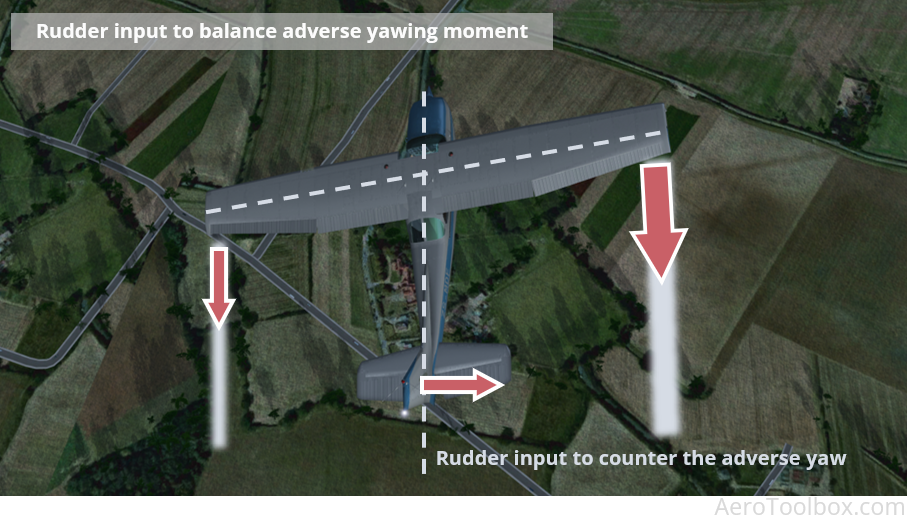
The turn coordinator or slip indicator on your instrument panel can be used to ensure you're flying a coordinated turn. With experience you will develop a ‘feel’ for the amount of rudder required to keep coordinated. Steeper turn will require a greater rudder input as the differential lift produced by the wings creates a larger induced drag imbalance.
Minimizing Adverse Yaw Through Design
There are a number of aileron designs that have been used over the years to mitigate the effects of adverse yaw, producing an aircraft that requires less rudder input to remain coordinated. Two designs common to general aviation:
Differential Aileron
In this design, the upward aileron is raised more than the corresponding one is lowered. This increases the effective angle of attack of the down-going wing, resulting in an increase in that wing’s lift-induced drag. This slight increase in drag of the downward-going wing offsets the additional induced drag on the upward wing, helping to balance the resulting yawing moment.
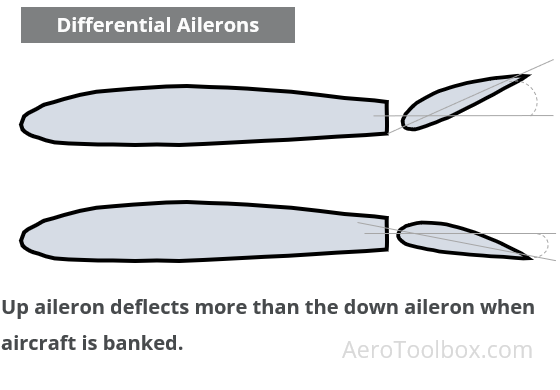
Frise Aileron
Frise ailerons pivot on an offset hinge, so when the aileron is deflected upward (down-going wing), its leading edge protrudes into the airflow, producing pressure or form drag. This form drag counters the induced drag from the lowered aileron and helps minimize adverse yaw.
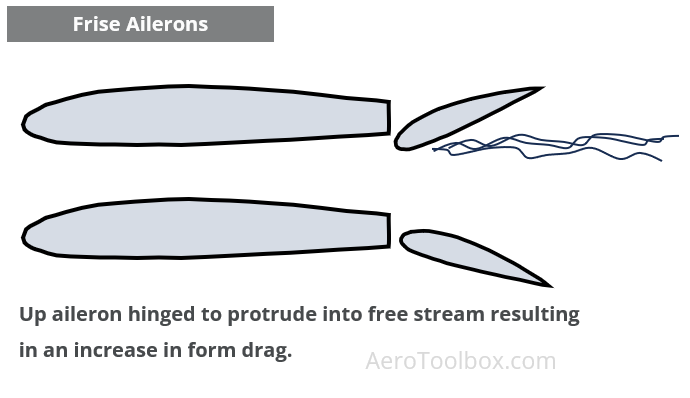
Wrapping Up
There is always some inherent control coupling present in the primary flight control surfaces. In this example we have shown that the secondary effect of aileron application is yaw. Similarly, the secondary effect of rudder application is roll. This cross-coupling demonstrates why it is so important to fly your airplane in a coordinated manner as far as possible.
Different airplanes experience adverse yaw to varying degrees; typically, the slower the aircraft flies, the more pronounced the adverse yaw as more aileron input is required to achieve and maintain the same angle of bank. Slow-flying aircraft, consequently, tend to show a stronger tendency for adverse yaw.


